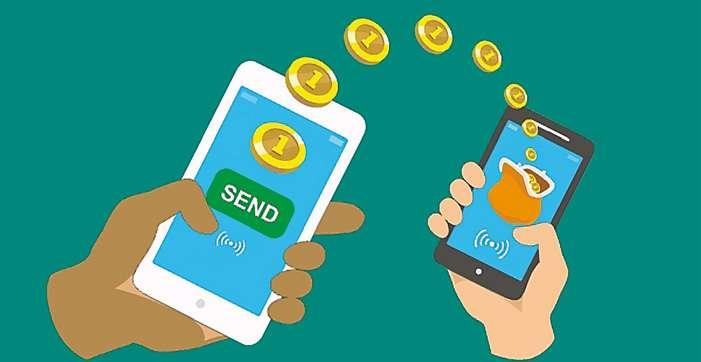
8 minute read
Electronic money and potential for development in
Dr. can Van luc Chief Economist, BIDV
Advertisement
Given the application of technology to banking operations, electronic money has great scope for development. So what is electronic money and its potential for development in Vietnam?
ELECTRONIC MONEY AND DEFINITIONS
Electronic money (e-money) is broadly defined. According to the European Central Bank (ECB), electronic money is an electronic store of monetary value on a technical device that may be widely used for making payments to entities other than the e-money issuer.
The Bank for International Settlement (BIS) defines electronic money products as stored value or prepaid products in which a record of the funds or value available to the consumer is stored on a device in the consumer's possession.
These definitions are somewhat complicated, which can cause confusion between e-money, virtual money, cryptocurrency and even mobile money. In fact, there is confusion between these definitions in Vietnam.
Electronic money has been clearly identified and distinguished from other currencies through four main features. First, electronic money must be legal tender. Second, electronic money can be issued by a bank or by a non-bank institution. Due to this, countries always have very strict regulations on e-money issuers to ensure safety for users. Third, e-money has the central bank's monetary regimes. Fourth, e-money can only be stored in electronic products including hardwarebased ones such as chip cards, smart phones with chips and software-based ones such as Paypal e-wallet.
The European Central Bank (ECB) defines virtual currency as “a type of unregulated, digital money, which is issued and usually controlled by its developers, and used and accepted among the members of a specific virtual community”. For example, the virtual currency Pokecoins in the game Pokemon GO or Facebook funds used for advertising or games on the Facebook apps.
For cryptocurrency, it is created by complex cryptographic algorithms, traded and exchanged entirely on the internet environment and currently not under the control of any individual or organisation (unless it is directly issued by a central bank).
Typical examples of cryptocurrency are Bitcoin and Ethereum. It is possible to identify the origin of cryptocurrency as virtual money but it is evolving to embody features of e-money such as the ability to convert into legal tender, however the ability to store value is less (due to the high volatility). Cryptocurrency still has a long way to go to become e-money primarily due to its lack of recognition amongst countries' central banks.
LOCAL REGULATIONS ON ELECTRONIC MONEY
In Vietnam, currently there is no legal document regulating the concept of electronic money. A number of documents such as the Law on the State Bank of Vietnam (2010), Law on Credit Institutions (2010), the Government’s Decree 101/2012/
ND-CP on non-cash payment and Decree 80/2016 amending a number of articles in the Decree 101/2012, the State Bank’s Circular 19/2016 on banking card operations (amended by Circular 26/2017), have regulated the different forms of electronic money including e-wallets and prepaid cards.
The government’s draft Decree on non-cash payments provides a clear definition of electronic money: “Electronic money is the monetary value stored on electronic media, prepaid by customers to banks, foreign bank branches, payment intermediary service providers to make payment transactions and its value is guaranteed equivalently at banks, including prepaid cards, e-wallets, and mobile money”.
Thus, e-money has three forms: prepaid cards are a form of electronic money issued by a bank or foreign bank branch, allowing the cardholder to perform card transactions within the amount of money deposited in the card. This form is the most common and familiar.
E-wallet is electronic money issued by an intermediary payment service provider, identifying a customer through her/his current account opened with a bank. This form has only been developed in the past few years yet has seen good growth. As of July 2020, Vietnam has 35 entities licensed to provide e-wallet service.
Mobile money is electronic money issued by telecommunications providers who are licensed to provide intermediary payment service, identifying the customer through a database of mobile phone subscribers. This form is the very electronic wallet on a mobile phone subscriber, and is not required to link to a bank account. If the e-wallet performs know-your-customer (KYC) through a bank, mobile operators must do the KYC by themselves. Whether it is an electronic wallet or mobile money, it is required to maintain an amount of money secured by the equivalent value of bank deposit which is transferred from the customer's current account to the service supplier’s account at a ratio of 1:1.
The forms of electronic money are types of legal tender represented on other means, not the value of any other currency. In particular, e-wallets and mobile money are expected to have strong growth and contribute significantly to the development of non-cash payments in Vietnam.
OPPORTUNITIES AND CHALLENGES
In Vietnam, e-wallets and mobile money are relatively new services, especially mobile money, but have great potential for strong growth in the future in terms of both supply and demand.
On the supply side, Vietnam has a large number of mobile phone subscribers, about 130.4 million and 15.7 million internet subscribers (as of June 2020); of which 3G and 4G broadband mobile phone subscribers number at more than 65.3 million. With 43.7 million smartphone users (accounting for 45 percent of the population in 2019), Vietnam is at the regional average, higher than India (25.3 percent), the Philippines (33.6 percent), Indonesia. (31.1 percent) and Thailand (43.6 percent).

Many advanced technologies are being applied such as biometric authentication (fingerprint, face recognition), quick response code (QR Code), and Tokenisation. Viettel and Vietnam Posts and Telecoms Group (VNPT) have been licensed by the State Bank of Vietnam to provide an intermediary payment service. The Ministry of Public Security launched the National Population Data Centre in August 2020, helping to support the deployment of eKYC.
On the demand side, there is plenty of room for non-cash payment to develop in Vietnam. Currently, only about 63 percent of adults (over 15 years old) have a bank account (according to the
State Bank of Vietnam, 2019), lower than China (80 percent) and the Asia Pacific (70 percent). The proportion of cash to the total means of payment in Vietnam in 2019 was 11.33 percent (down 0.45 percent compared to 2018).
In addition, developing new and modern forms of payment (including mobile money) to serve rural and remote areas and underbanked people and contributing to promoting financial inclusion is one of the government's key targets in the National Financial Inclusion Strategy.
Finally, in the context of the complicated developments of Covid-19, governments in many countries have limited the use of cash to minimise the risk of the spread of the disease. In Vietnam, the government issued Directive 11 (4 March 2020) to speed up the pilot implementation of mobile money. Individual and business customers also conduct more online transactions.
The development of new forms of electronic money in Vietnam should take into account six main challenges.
Firstly, the habit of paying cash in Vietnam is not easy to change overnight. Secondly, with the characteristics of a high-tech product, mainly provided through mobile operators, the monitoring and management of mobile money needs close coordination between relevant agencies such as the State Bank of Vietnam, the Ministry of Information and Communication, and the Ministry of Public Security. Thirdly, if the ‘know-your-customer’, spam sim management and anonymous transactions are not strictly performed, mobile money can be a channel for “transaction laundering”, affecting the prevention of money laundering. Fourthly, developing a network of agents creates risks related to the qualifications, capabilities, awareness and responsibilities of this network. Fifthly, without proper management and security, customers’ money is at risk of being lost, with the blame being placed on suppliers, agents, IT criminals or even relatives. Finally, the legal environment for mobile money and e-wallet is still not complete, uniform and specific.

RECOMMENDED SOLUTIONS FOR E-MONEY DEVELOPMENT
Firstly, measures should be taken to promote non-cash payments, to issue the "Overall strategy on the national payment system" and a decree to replace the current Decree on non-cash payments as soon as possible, as well as to finalise the legal framework with the application of modern technologies to the finance - banking sector such as blockchain, Fintech, peer-to-peer lending and electronic authentication.
Secondly, the legal framework for mobile money must be completed towards encouraging while ensuring safety, feasibility and effectiveness, finalising specific regulations for e-wallets with attention paid to the following issues: information and data risks, agent risks, technical risks, minimising money laundering transactions, gambling, terrorism financing, clarifying coordination process and responsibilities of stakeholders in the management, monitoring and operation of the service.
Thirdly, it is necessary to have a roadmap to reduce the deposit ratio of the non-bank issuer in accordance with the capacity of the system. Regulation on the deposit ratio of non-bank issuers at 100 percent is appropriate for the current context. However, technology and the capacity of these issuers will increasingly develop, and the State Bank's management and supervision capacity will also improve, following this the ratio can be gradually reduced under an appropriate roadmap to create conditions for the market development.
Fourthly, finalising the ‘know-yourcustomer’ system through finalising and issuing regulations on customer verification and identification; speeding up the project on building a national population database and citizen codes. Telecom companies also need to quickly complete the standardisation of mobile subscriber information, customer identification, and spam sim control.
Finally, well implementing the development strategy of the banking industry to 2025 with a vision to 2030 (accordingly, the proportion of cash to total means of payment will be below 8 percent); and implementing the financial inclusion strategy to 2025, with a vision to 2030 (targets by 2025: at least 80 percent of adults have a transaction account, non-cash payment transactions grow by 20 -25 percent annually) must be prioritised. Credit institutions, including BIDV, need to proactively develop/adjust their business strategies in accordance with the new stage, focusing on providing modern services, applying digital technology, strongly developing non-credit services, and committing to actively and effectively participate in the financial inclusion strategy.










